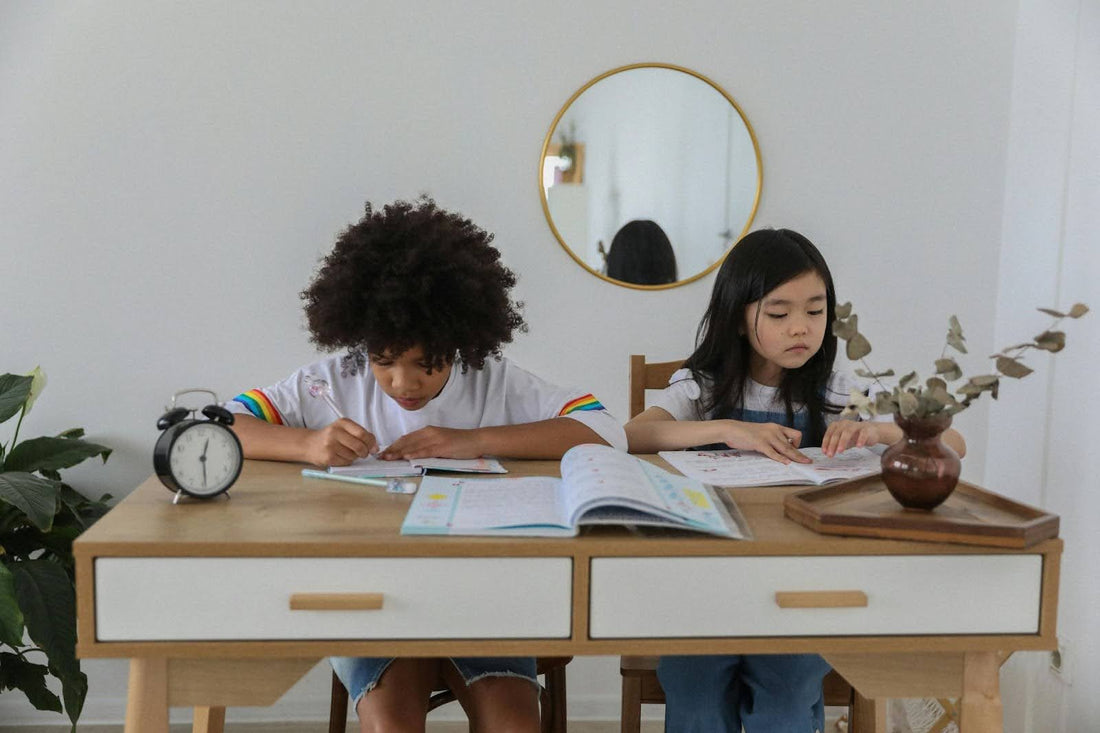
Creating Safe Spaces for Children at Home & School
Share
Children thrive in environments where they feel secure, supported, and free to grow. Whether at home or school, creating safe spaces isn’t just about preventing physical harm—it’s about nurturing emotional well-being, fostering independence, and building trust. From the furniture they use to the policies schools adopt, every detail matters in shaping a child’s sense of safety.
Why Safe Spaces Matter for Children
Safety goes beyond keeping kids from harm—it impacts how they learn, play, and interact. When children feel safe, they are more confident to explore, ask questions, and build relationships. According to the CDC, students who feel safe at school are more likely to perform better academically and have stronger mental health outcomes. This highlights how physical and emotional safety directly influence a child’s ability to thrive.
Building a Safe Home Environment
At home, safety starts with thoughtful design and mindful parenting. Creating safe spaces means anticipating risks while also encouraging independence. This can include baby-proofing for toddlers, safe play areas for younger children, and open communication for teens. Furniture choices, organization, and supervision all contribute to a home that feels both welcoming and secure.
Practical Home Safety Tips
Here are some simple ways to enhance safety at home:
- Anchor heavy furniture to walls to prevent tipping.
- Use childproof locks on cabinets containing cleaning products or medications.
- Keep electrical outlets covered.
- Choose furniture with rounded edges to minimize injuries.
-
Provide organized storage so toys and school items don’t become tripping hazards.
These small adjustments not only reduce risks but also show children that their well-being is a priority.
Emotional Safety at Home
Creating safe spaces isn’t only physical—it’s also emotional. Home should be a place where children feel heard and respected. Encourage open conversations, validate feelings, and establish clear boundaries. When children know they can express themselves without judgment, they develop confidence and resilience.
Designing Safe Spaces in Schools
Schools face the challenge of balancing large numbers of students with diverse needs while keeping safety at the forefront. Classrooms should be designed to reduce clutter, allow easy supervision, and ensure safe access to materials. Beyond furniture and layouts, schools must also address modern challenges like bullying, vaping, and digital safety.
Modern Tools for School Safety
Technology now plays a critical role in keeping schools safe. For example, vape detectors for schools are becoming increasingly important. These devices detect vaping in bathrooms or other hidden areas, helping schools discourage harmful habits and protect student health. Along with detectors, surveillance systems, access control, and communication tools are part of a layered approach to safety.
Encouraging Emotional Safety at School
Just like at home, emotional safety in schools is crucial. Teachers and administrators can foster this by creating inclusive classrooms, addressing bullying quickly, and encouraging peer support programs. Schools that prioritize mental health resources, such as counseling services and peer mentoring, provide students with outlets to feel supported and understood.
Collaborating With Children
Children feel safest when they are part of the conversation. At home, this might mean letting them help set up their playroom or choose décor for their bedroom. In schools, student councils or feedback surveys can give kids a voice in shaping policies that affect their daily lives. Involving them in decisions shows respect for their perspectives and encourages responsibility.
Balancing Independence and Safety
While safety is important, overprotecting children can limit their growth. The goal is to strike a balance: protect against real risks while giving kids room to explore and make mistakes. For example, letting a child climb on playground equipment teaches motor skills, while ensuring the surface beneath is cushioned provides the necessary safety net.
The Role of Community in Safety
Both home and school safety benefit from strong community involvement. Parents, teachers, administrators, and even local organizations can collaborate to share resources and best practices. When the broader community invests in safety—through clean parks, safe walking routes, and accessible mental health services—children benefit on every level. Schools and communities can also use visible symbols, such as custom flags at events or awareness campaigns, to reinforce messages of safety, unity, and belonging for children.
Final Thoughts
Safe spaces aren’t just about eliminating dangers—they’re about creating environments where children can grow with confidence. At home, that means thoughtful design, emotional support, and a balance between protection and independence. In schools, it means combining modern tools like vape detectors for schools with strong emotional support systems. By working together as families, educators, and communities, we can ensure that every child feels safe, valued, and ready to take on the world.




